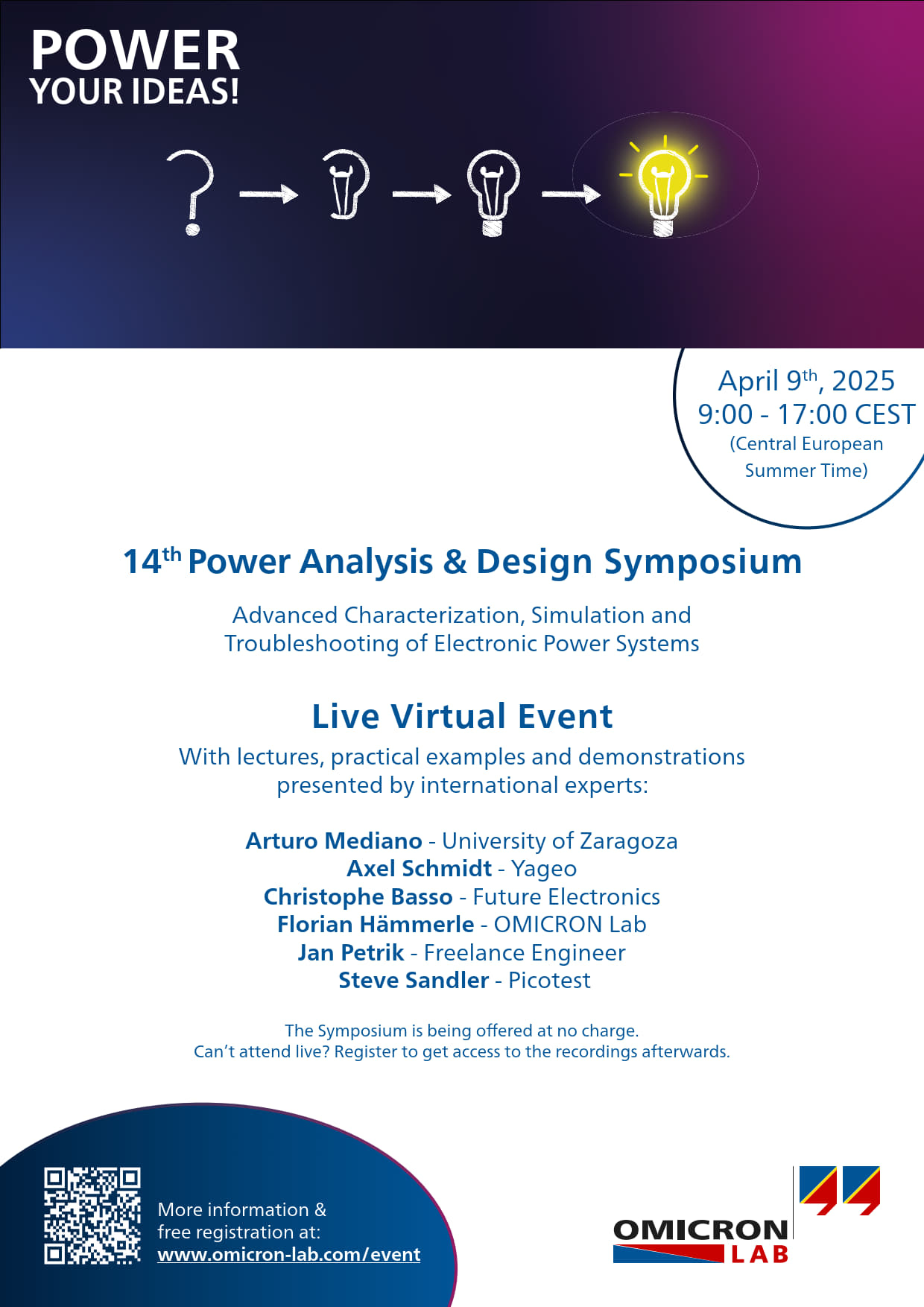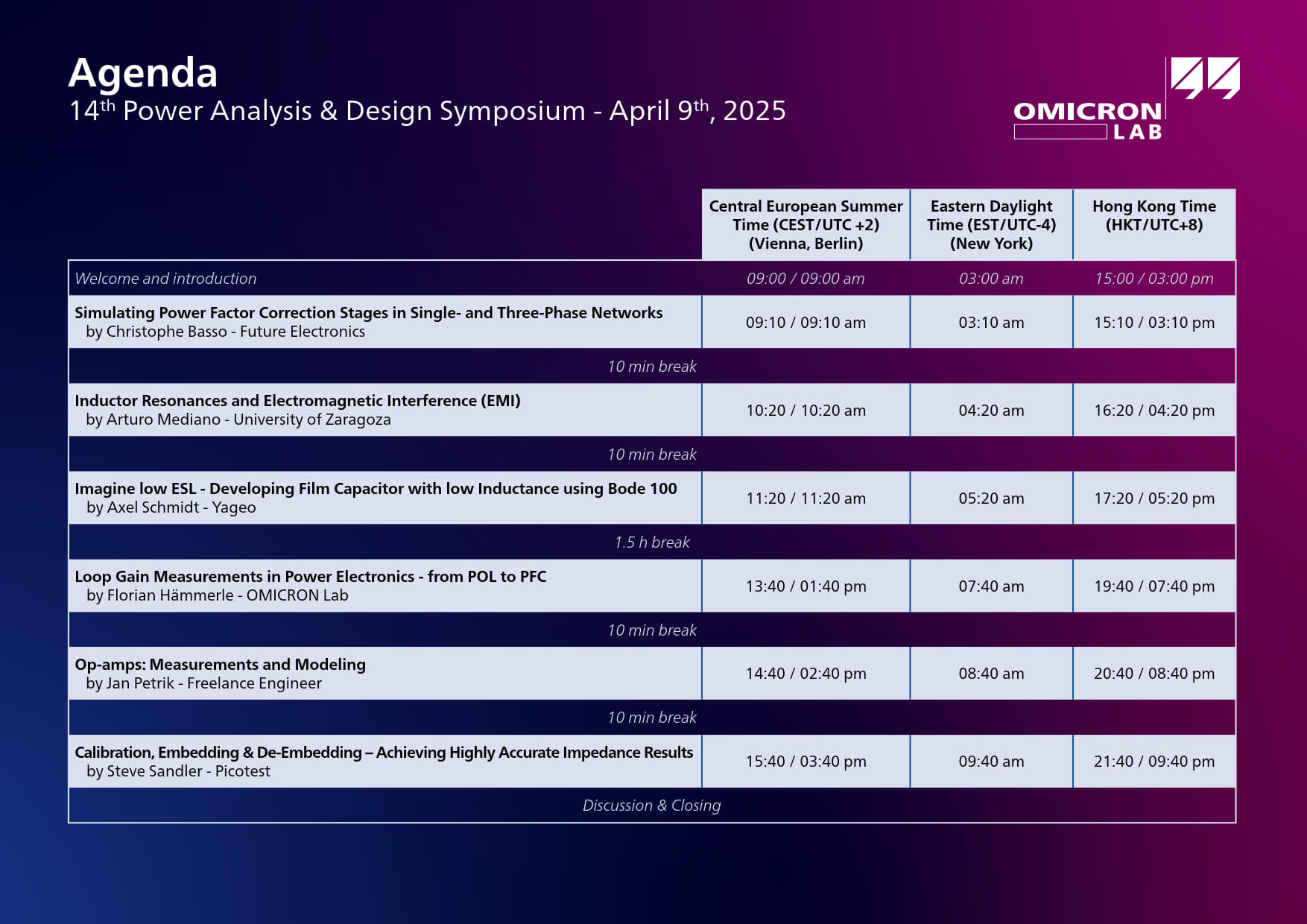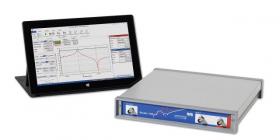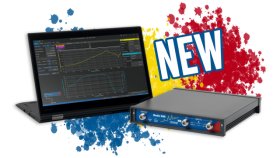14th Power Analysis & Design Symposium 2025 (VIRTUAL)
Mon 17.02.2025
14th Power Analysis & Design Symposium Advanced Characterization, Simulation and Troubleshooting of Electronic Power Systems
14th Power Analysis & Design Symposium
Advanced Characterization, Simulation and
Troubleshooting of Electronic Power Systems
The 14th Power Analysis & Design Symposium will take place as a live, virtual event on:
Wednesday, April 9th, 2025.
Experience a great day, packed with live lectures from international electronics experts focusing on power supply design.
- Registration here:
- Flyer:
- Agenda
Seminar Topics
Simulating Power Factor Correction Stages in Single- and Three-Phase Networks
by Christophe Basso - Future Electronics
In this 60-minute seminar, you will learn the basics of power factor correction and discover how the power is processed in single- and three-phase applications. Illustrated with many examples in SIMetrix/SIMPLIS and LTspice, the presentation is well-suited for students and power designers involved in the design of PFC circuits.
Inductor Resonances and Electromagnetic Interference (EMI)
by Arturo Mediano - University of Zaragoza
Inductors are one of the essential components in the design of any electronic system, alongside capacitors. They come in various types, including air-core and magnetic-core inductors, and are utilized in low-signal applications as well as in power electronics. Inductors play critical roles in the design of filters, impedance matching networks, DC/DC converters, oscillators, and more. However, inductors are not ideal components. Their resonant frequencies can pose significant challenges, particularly in the context of Electromagnetic Compatibility (EMC) and EMI design. These resonances can lead to unintended oscillations or issues, which are often complex and challenging to diagnose. In this session, we will introduce the nature of these resonant frequencies, exploring how they can be measured and modeled in a basic form. We will also present some examples illustrating the critical problems that arise when attempting to achieve designs compliant with EMC standards. Understanding these resonances is vital for developing robust electronic systems that minimize interference and optimize performance.
Join us as we uncover the intricacies of inductor behavior and its impact on EMI, and learn strategies for effective design that ensure electromagnetic compatibility.
Imagine low ESL - Developing Film Capacitor with low Inductance using Bode 100
by Axel Schmidt - Yageo
Power applications go along with high currents. Wideband technology allows higher switching frequencies. Together, this requires a special focus on the low inductance of the whole system. The topic of the investigation with Bode 100 is how a vendor develops low inductance components, what are the set screws to achieve a low ESL component, and how to build simulation models for the higher sophisticated SPICE software.
Loop Gain Measurements in Power Electronics - from POL to PFC
by Florian Hämmerle - OMICRON Lab
This presentation provides an overview of performing loop gain measurements in power electronic applications. Different probing and injection methods apply depending on the power or voltage level. Selecting the injection point is critical in a loop gain measurement since a wrong injection point can falsify the measurements. In the best case, you consider the injection point during the design phase to simplify the lab measurements used for experimental verification.
Op-amps: Measurements and Modeling
by Jan Petrik - Freelance Engineer
The presentation will introduce you to a wonderful world of op-amps, measurements, and SPICE modeling. It will show you how to perform the necessary measurements with Bode 100. And how to use acquired data to construct your own stability model in LTspice. The use and benefits of the stability model will be demonstrated.
Calibration, Embedding and De-Embedding - Achieving Highly Accurate Impedance Results
by Steve Sandler - Picotest
Accurate measurements rely on proper calibration of the test setup to the correct reference plane. Traditional Vector Network Analyzers (VNAs) offer a variety of methods for embedding, de-embedding, and calibration to achieve high measurement accuracy. However, the Bode 100 and Bode 500 VNAs require unique approaches to obtain optimum results.
In this session we will explore calibration techniques, including embedding and de-embedding, for both traditional VNAs and the Bode 100/500. We'll highlight common sources of measurement errors, such as challenges introduced by using probes or soldered pigtails instead of RF connectors. Additionally, we demonstrate how to establish and shift the calibration reference plane to support SPICE and EM models.
While perfect measurements are unattainable, employing the appropriate calibration, embedding, and de-embedding techniques significantly enhances the accuracy of impedance measurements. This is especially critical for low-impedance, low-frequency applications, including capacitor ESL, small capacitances like inductor self-resonance, PCB traces, PDN impedance, and RF applications.












